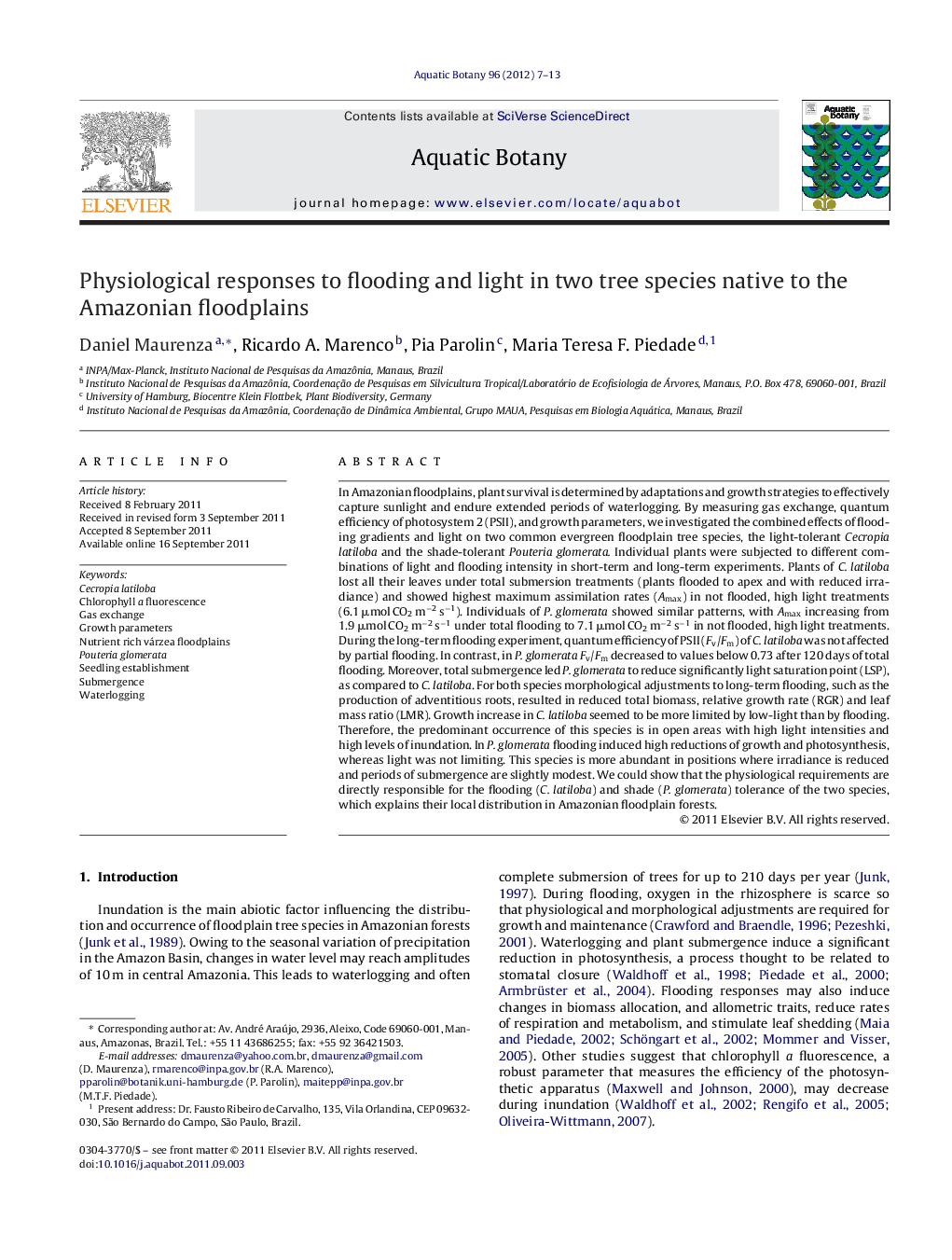| کد مقاله | کد نشریه | سال انتشار | مقاله انگلیسی | نسخه تمام متن |
|---|---|---|---|---|
| 4528043 | 1324279 | 2012 | 7 صفحه PDF | دانلود رایگان |

In Amazonian floodplains, plant survival is determined by adaptations and growth strategies to effectively capture sunlight and endure extended periods of waterlogging. By measuring gas exchange, quantum efficiency of photosystem 2 (PSII), and growth parameters, we investigated the combined effects of flooding gradients and light on two common evergreen floodplain tree species, the light-tolerant Cecropia latiloba and the shade-tolerant Pouteria glomerata. Individual plants were subjected to different combinations of light and flooding intensity in short-term and long-term experiments. Plants of C. latiloba lost all their leaves under total submersion treatments (plants flooded to apex and with reduced irradiance) and showed highest maximum assimilation rates (Amax) in not flooded, high light treatments (6.1 μmol CO2 m−2 s−1). Individuals of P. glomerata showed similar patterns, with Amax increasing from 1.9 μmol CO2 m−2 s−1 under total flooding to 7.1 μmol CO2 m−2 s−1 in not flooded, high light treatments. During the long-term flooding experiment, quantum efficiency of PSII (Fv/Fm) of C. latiloba was not affected by partial flooding. In contrast, in P. glomerata Fv/Fm decreased to values below 0.73 after 120 days of total flooding. Moreover, total submergence led P. glomerata to reduce significantly light saturation point (LSP), as compared to C. latiloba. For both species morphological adjustments to long-term flooding, such as the production of adventitious roots, resulted in reduced total biomass, relative growth rate (RGR) and leaf mass ratio (LMR). Growth increase in C. latiloba seemed to be more limited by low-light than by flooding. Therefore, the predominant occurrence of this species is in open areas with high light intensities and high levels of inundation. In P. glomerata flooding induced high reductions of growth and photosynthesis, whereas light was not limiting. This species is more abundant in positions where irradiance is reduced and periods of submergence are slightly modest. We could show that the physiological requirements are directly responsible for the flooding (C. latiloba) and shade (P. glomerata) tolerance of the two species, which explains their local distribution in Amazonian floodplain forests.
► Submersion decreases physiologic plant performance.
► Waterlogging seems not be limiting for plant survival.
► The dependency of light turns flooding a secondary limitation for Cecropia latiloba.
► Studied plants may have migrated from Amazonian uplands to the floodplains.
Journal: Aquatic Botany - Volume 96, Issue 1, January 2012, Pages 7–13